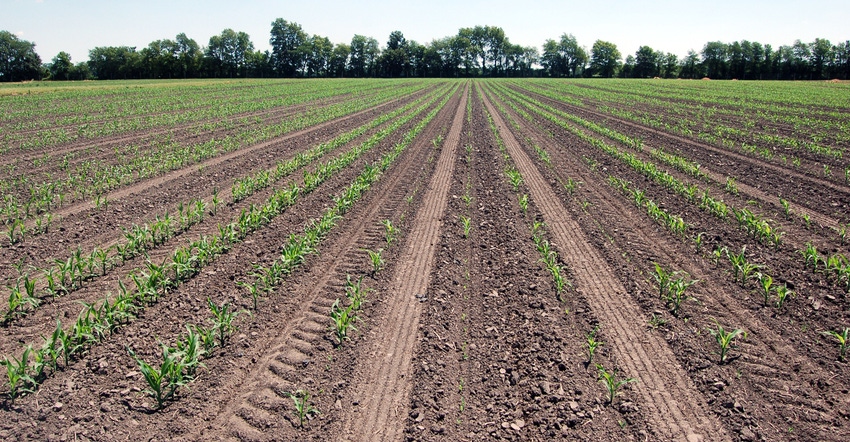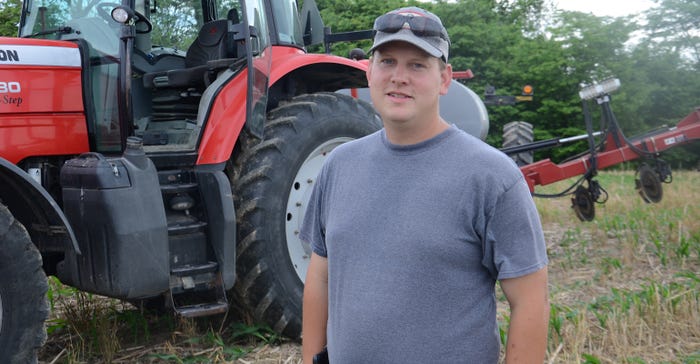
Does this sound like you? You aren’t ready to buy a new planter, but you want to boost yields and profit by investing in your current planter. It boils down to this: What should you invest in first?
The obvious answer is an equipment add-on, such as some type of seed meter or something besides rubber closing wheels. But when this question was posed to agronomists and farmers, some insisted the best investment would be replacing worn parts first. Once you are satisfied the planter is in top shape, look at other options.
“There are many crop production ‘solutions’ available for farmers to purchase,” says Bob Nielsen, Purdue University Extension corn specialist. “Farmers should only invest in solutions for problems they actually have.
“If you don’t know which specific planter problems you have, you can’t make a smart decision about which planter solutions to invest in — there are no one-size-fits-all types of planter solutions that work in every situation.”
Nielsen suggests asking another question: “What problems do you routinely experience with planting?” The follow-up question is: “What problems do you routinely experience with stand establishment?”
Answering these questions should help you zero in on components that could be replaced with original equipment manufacurer parts or new technologies, Nielsen says. “If emergence and stand establishment are routinely acceptably uniform and stands average 90% to 95% of targeted populations, you probably don’t need to replace closing wheels, invest in auto-controlled residue managers or downforce controls,” he adds.
Check for wear and tear
“The first thing I would suggest is investing time and money to thoroughly check out the entire planter,” Nielsen advises. “Determine what parts literally need to be replaced due to wear and tear.
“Those replacement parts will likely be the most cost-effective solutions, because most modern planters, if maintained well and operated smartly, are capable of doing an acceptable job of planting under a wide range of soil conditions.”
Nielsen isn’t the only one who suggests checking wear points on your planter before doing anything else. “The first thing I want to do is check all of my wear points,” says Carter Morgan, Vermillion County, Ind. He is part of a multigenerational family farm. Morgan also works for the Vermillion County Soil and Water Conservation District, working with other farmers interested in adopting soil health practices.
“If any wear points are worn out, they need to be taken care of first,” he says. “That may be gauge wheel arms, double discs, bearings, closing wheels and more. We can add all the technology we want to a planter, but if the basics aren’t accounted for first, then we’re not achieving our best planter pass. We need all these things in tip-top shape to achieve the most consistent depth, ground contact and closing system.”

Pete Illingworth prepares and operates planters at the Throckmorton Purdue Ag Center near Romney, Ind. He primarily operates an older John Deere MaxEmerge planter equipped with a Precision Planting 20/20 monitor. In a replicated field trial in 2021, he achieved 97% to 98% of target accuracy most of the time while planting. His go-to strategy is replacing worn parts each year.
“Switching to that monitor made a big difference for us,” he says. “I thought I was accurate before, but I found I was only reaching 94% to 95% accuracy on seed drop sometimes. Once we knew it, we made adjustments to improve accuracy to where we are today.”
In fact, Illingworth says your first step may come before worrying about the planter. “If you’re buying a bigger used planter, for example, even before you go through the planter, make sure that you have a tractor that can handle it properly,” he stresses.
That means more than just enough horsepower to pull it. “Having enough hydraulic capacity to power the planter is a big deal,” Illingworth says. Plus, you need enough electrical capacity if you anticipate installing add-ons later. That’s why you find some planters today with generators mounted on the frame.
Maintenance first
Jamie Bultemeier, an agronomist who also farms in Allen County, Ind., believes both Nielsen and Illingworth are on target. “For an older planter, maintenance is first,” he says. “There is no reason to start looking at advanced options until the planter functions as designed.
“All too often, producers are looking to fix a symptom with a planter upgrade rather than fix the core issue. Often, the upgrade doesn’t fix the core issue and the symptom remains.”
If the planter is well-maintained, Illingworth is right about the next step, Bultemeier says. “The first investment is advanced monitoring, but it’s only effective if the operator makes the effort to evaluate planter performance,” Bultemeier says. “Advanced monitoring, coupled with GPS and autosteering, allows the operator to focus on planter operations in various areas of the field and in different soil types.”
Coupling these observations with planter performance maps and yield maps can be valuable in identifying planter limitations, he adds.
Steve Gauck farms with his family near Greensburg, Ind., and visits many other farms as a regional agronomy manager for Beck’s. Like Nielsen, he agrees there are no silver bullets.
“The first thing to do is check for wear and replace worn parts,” he says. “Bushings in the parallel arms are the ‘most missed’ item. Next would be seed discs. Replace them if they measure 14.5 inches in diameter or less.
“Check the seed tubes, and make sure the planter bar upfront runs level with the field. In the back, be sure closing wheels are lined up.
“If maintenance of your planter isn’t 100%, all the add-ons will not help.”
Clayton Stufflebeam, a Beck’s Practical Farm Research agronomist based near Lewistown, Ill., adds, “Always put maintenance first. It should come before you consider upgrades to the planter.”
Editor’s note: This is the first in a series of articles about updating planters.
About the Author(s)
You May Also Like




